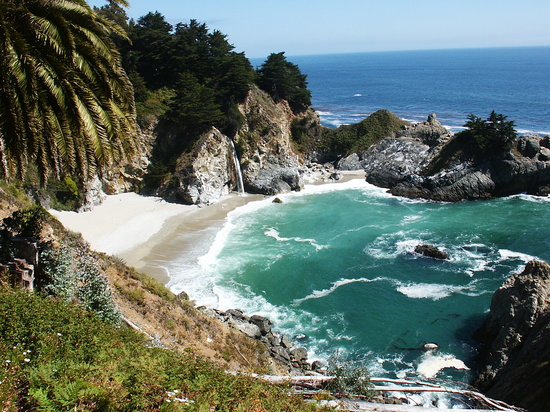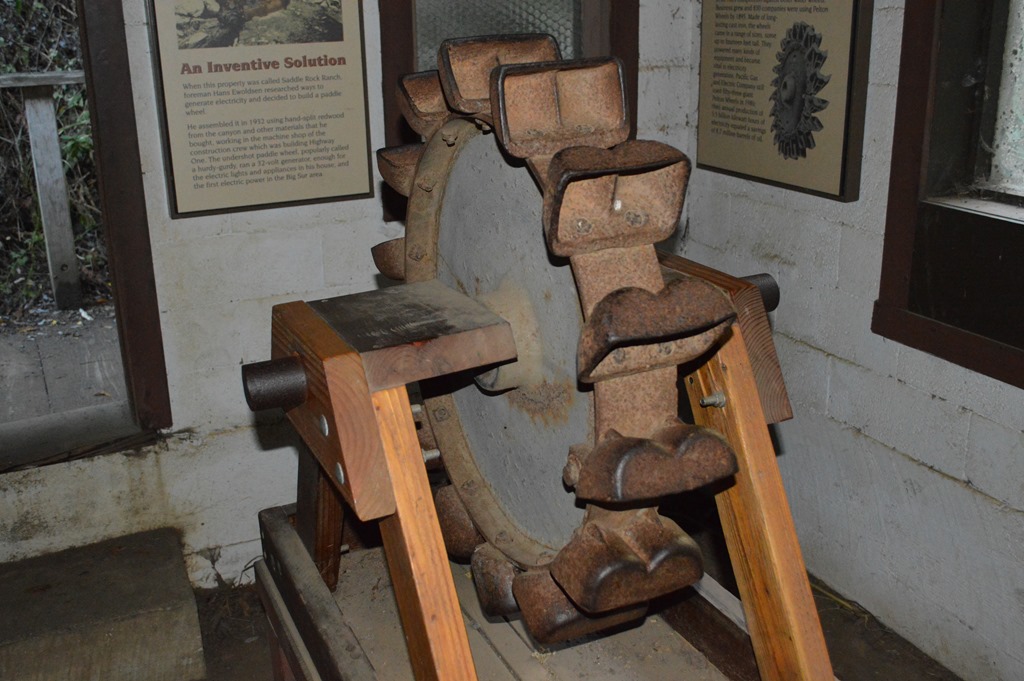Big Sur is located along Scenic Highway One approximately 150 miles south of San Francisco and 300 miles north of Los Angeles. The Big Sur region's northern end is at Carmel, approximately 130 miles south of San Francisco and adjacent to Monterey. Its southern end is at San Simeon, about 240 miles north of Los Angeles and near Cambria, Morro Bay, and San Luis Obispo.
Early Settlement of Big Sur
The first group of people to ever settle on Big Sur were three Native American tribes known as the Ohlone, Esselen, and Salinan. They lived in Big Sur for thousands of years, adopting a hunter-gatherer lifestyle.
In 1769, the first Europeans known to ever set foot on Big Sur were the Spanish, led by Gaspar de Portola near San Carpoforo Canyon. With the help of Father Junipero Serra, Portola landed in Monterey Bay in 1770, and found most of the missions in California. The Spanish gave Big Sur the name "El Sur Grande", meaning "The Big South", because it was a large, unexplored land south of their capital. The colonization of the Spanish wiped out most of the Native American tribes by disease contraction, forced-labor, and malnutrition.
In 1821 when Mexico gained independence from Spain, Big Sur along with the rest of California became a part of Mexico. In 1834, Jose Figueroa, governor of Mexico, appointed Juan Bautista Alvarado to a 9000-acre rancho in Big Sur to claim ownership. The oldest structure that still stands today, called Cooper Cabin, was built in 1861on the Cooper Ranch (shown below)
After the passage of the Homestead Act in 1862, pioneers began to settle in regions of Big Sur on land they were promised.
From the 1860s until part of the 20th century, Big Sur took a huge industrial leap. Lumbering, gold mining, and harvesting were amongst the three drivers of the early economy. Surprisingly, the economy of Big Sur provided more job opportunities and support to populations greater than todays.
After Big Sur's industrial "boom" came to an end, the remaining decades of the 20th century were nothing but a wilderness. Electricity was not accessible to the people until 1920's, and even then they were operated by water wheels and were available to only a few residents.
Scenic Highway 1's history in Big Sur can be traced back to 1872, when wagon roads were built south from Monterey to Bixby Creek. It was not until 1919 that California's voters approved bonds to build a modern road. Construction began in 1922, and in 1937, Scenic Highway 1 was finally completed after eighteen years of construction. It was one California's first scenic highways known for its aesthetic beauty and breathtaking experience for people driving by. 

In the mid 20th century, more and more pioneers were drawn to Big Sur's scenic beauty and isolated state. The region became home to a Catholic ministry, the New Camaldoli Heritage, established in 1958, and the Esalen Institute which was a retreat center founded in 1962. Esalen was known for spreading Eastern philosophies and Gestalt Therapy in the United States. Big Sur came to be known for its "bohemian" reputation with the inward movement of these newcomers. Amongst the many pioneers who moved to the Big Sur region were writers and authors, including Henry Miller, Edward Weston, and Jack Kerouac. In an interview, Henry Miller states a traveler went to his house in search of a "cult of sex and anarchy".
Big Sur Today
According to the US Census Bureau, Big Sur's scanty population has less than 1500 residents today. The people of Big Sur come from very diverse backgrounds, some of which are descendants of early settlers and ranchers, and some who are wealthy home-owners. Aside from its nature-filled beauty, Big Sur doesn't offer much entertainment other than a few gas stations, restaurants, and motels, thus the economy is based solely on tourism. Much of the land is privately-owned or has been donated to the state park system.
Sources from:
http://jrabold.net/bigsur/intro.htm
http://www.bigsurcalifornia.org/history.html
http://bigsurcoast.publishpath.com/history
http://www.britannica.com/EBchecked/topic/65010/Big-Sur
http://vimeo.com/58045466
U.S. Census Bureau







No comments:
Post a Comment